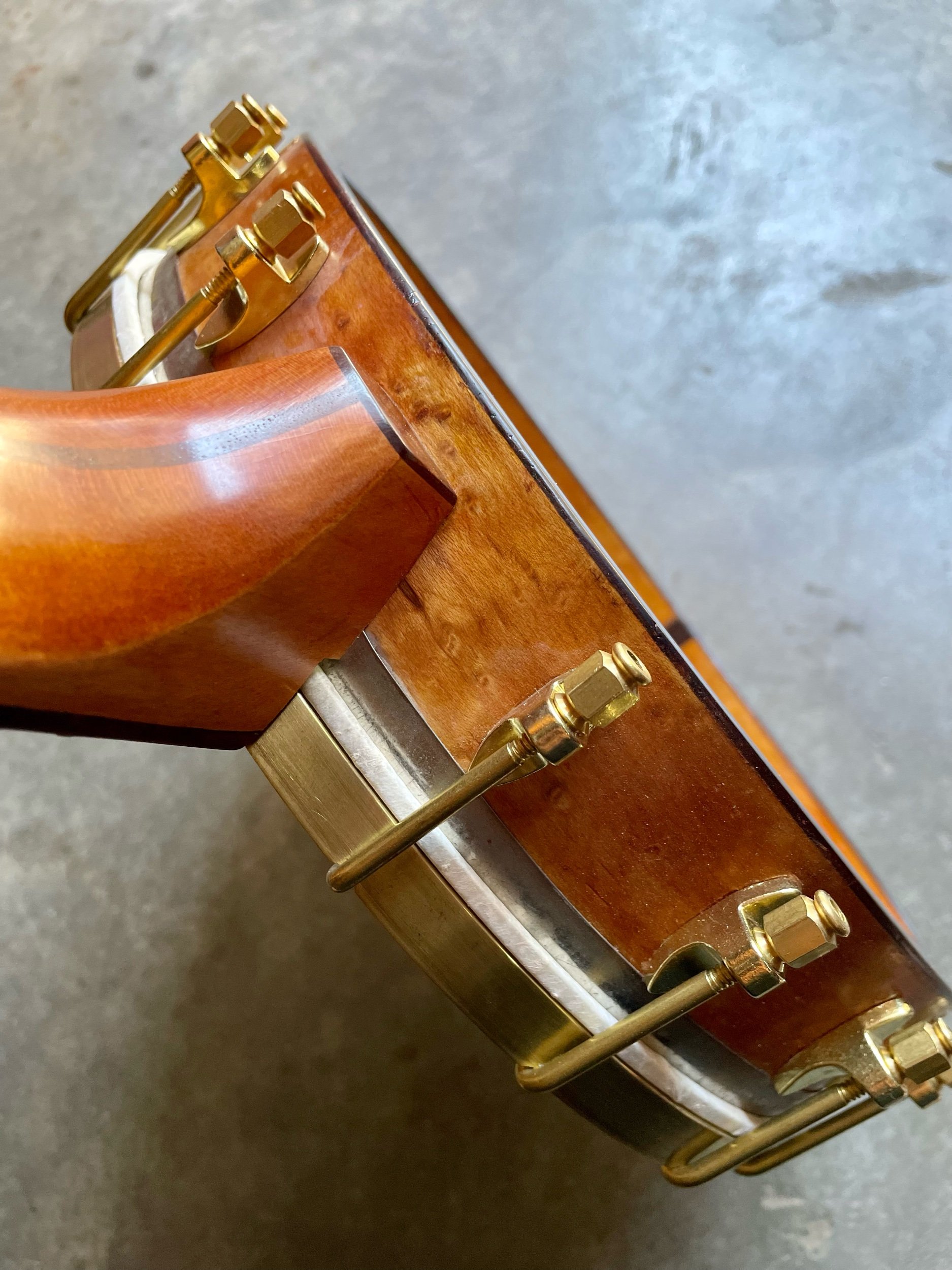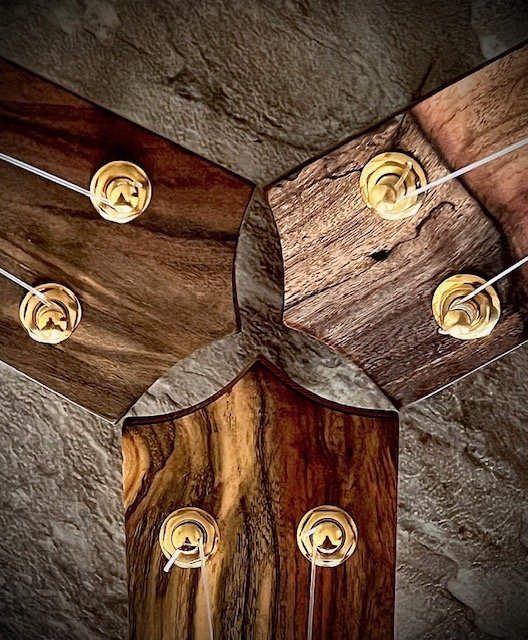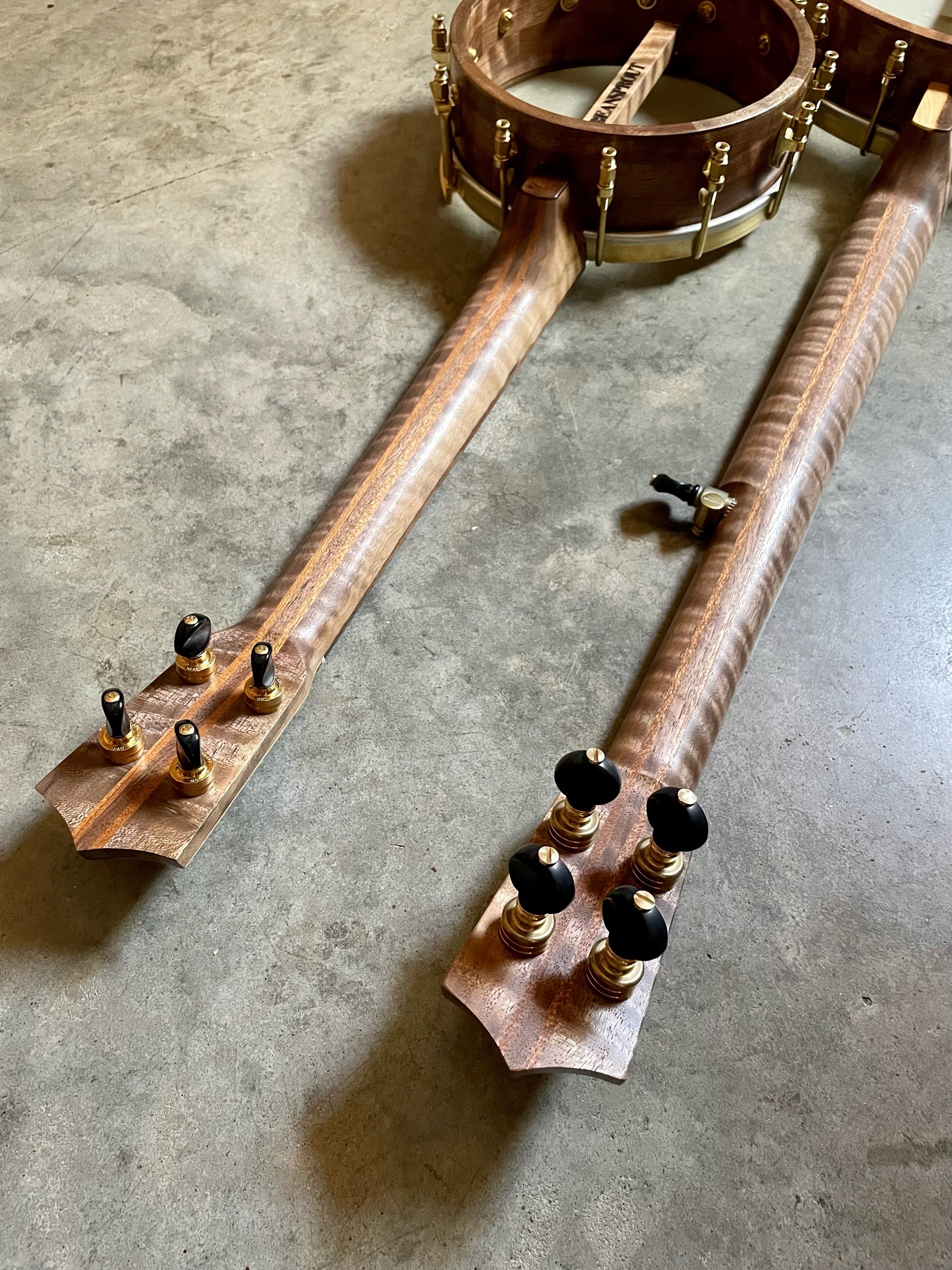This instrument is a close copy of one I made last year. The Redwood top and crazy Mahogany were both salvaged from a closing boat shop in Tacoma last fall. I used the same Mahogany for the neck as well. For the binding, we chose the random rope pattern that I make. The final flourish is the crazy Pistachio from woodfromthewest.com. I have another on order for next month and one more set of this Redwood and Mahogany on a shelf that is available. I love the sound of this combo and the aesthetic is certainly wild!
“Love it. I’ve been playing it almost exclusively.
It’s my wife’s favorite too.
I took a picture of both my Beansprout Ukes.
# 516 and # 832.
Thanks!
- D. K. ”
















































































































































